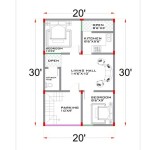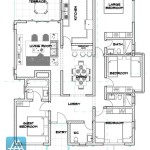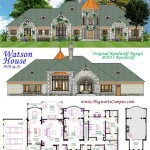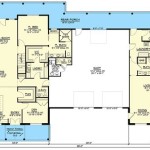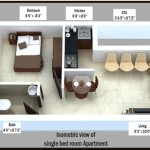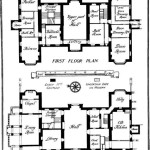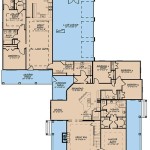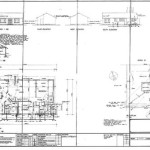Unusual Floor Plans For Houses: Reimagining Residential Space
Conventional housing often adheres to predictable floor plans, characterized by rectangular rooms and linear hallways. However, a growing interest in unique living spaces has led to the exploration of unusual floor plans. These designs prioritize individual needs, lifestyle preferences, and aesthetic visions, resulting in homes that are both functional and visually striking.
Unusual floor plans are not merely deviations from the norm; they represent a conscious effort to optimize space utilization, enhance natural light penetration, and foster a specific atmosphere within the home. They can incorporate unconventional shapes, multi-level configurations, and unexpected room arrangements to create a truly personalized living environment. The pursuit of these innovative designs requires careful consideration of structural integrity, building codes, and the occupants’ daily routines.
Open-Concept Living with a Twist
The open-concept floor plan has gained widespread popularity for its ability to create a sense of spaciousness and facilitate social interaction. Unusual variations of this concept extend beyond the typical removal of walls between the kitchen, living room, and dining area. These variations introduce unexpected elements such as curved walls, elevated platforms, or sunken living rooms to define distinct zones within the open space without resorting to traditional partitions.
Curved walls, for example, can soften the visual flow of the space and create a more organic feel. They can subtly delineate different areas while maintaining a sense of connection. Elevated platforms, often used in loft apartments, can create a separate seating area or reading nook with enhanced views. Sunken living rooms, popular in mid-century modern architecture, offer a cozy and intimate gathering space that is visually distinct from the surrounding areas.
Furthermore, unusual open-concept plans may incorporate strategically placed columns or partial walls to create visual interest and provide structural support. These elements can also serve as dividers between different zones without completely blocking the flow of light and movement. The careful placement of furniture and accessories is crucial in defining the function of each area within the open space and maintaining a sense of order.
The success of an unusual open-concept floor plan hinges on a well-defined circulation pattern. The layout should facilitate easy movement between different zones and avoid creating awkward or congested areas. The placement of doors and windows should be carefully considered to maximize natural light penetration and ventilation throughout the space. Ultimately, the goal is to create a harmonious and functional living environment that promotes a sense of openness and connection.
Multi-Level Living with Internal Variations
Multi-level homes are inherently more complex than single-story dwellings, offering greater opportunities for unusual floor plan designs. Instead of simply stacking floors on top of each other, innovative designs explore the possibilities of staggered levels, split-level configurations, and internal balconies to create dynamic and visually engaging spaces.
Staggered levels, where floors are slightly offset from each other, can create a sense of visual interest and provide opportunities for unique room arrangements. This design approach can be particularly effective in homes built on sloping sites, allowing the architecture to adapt to the natural topography. Split-level configurations, characterized by short flights of stairs leading to different levels, can create a sense of separation between different areas while maintaining a cohesive flow throughout the home.
Internal balconies, overlooking lower levels, can create a dramatic visual effect and enhance the feeling of spaciousness. These elements can also serve as bridges between different areas of the home, fostering a sense of connection and communication. The use of open staircases and transparent railings can further enhance the visual flow and allow natural light to penetrate deeper into the interior.
The design of multi-level homes requires careful consideration of accessibility. The placement of stairs and elevators should be carefully planned to ensure that all areas of the home are easily accessible to all occupants. The use of ramps and other accessibility features can further enhance the usability of the home for people with mobility limitations. The incorporation of skylights and large windows can maximize natural light penetration and create a bright and welcoming atmosphere throughout the various levels.
Incorporating Angular and Asymmetrical Forms
While rectangular spaces are the most common in residential architecture, unusual floor plans often embrace angular and asymmetrical forms to create dynamic and visually striking designs. These designs challenge conventional notions of symmetry and balance, resulting in homes that are both unique and expressive.
Angular forms, such as triangles and trapezoids, can be used to create visually interesting room shapes and maximize space utilization on irregular sites. Asymmetrical layouts, where different parts of the home are deliberately unbalanced, can create a sense of dynamism and visual interest. These designs often incorporate unexpected angles and curves to create a more organic and fluid feel.
The use of unconventional materials and finishes can further enhance the impact of angular and asymmetrical forms. For example, exposed concrete walls can complement the sharp angles of the design, while natural wood finishes can soften the overall aesthetic. The careful selection of furniture and accessories is crucial in maintaining the visual balance of the space and avoiding a cluttered or chaotic appearance.
Designing with angular and asymmetrical forms requires careful attention to structural integrity and building codes. The unusual shapes may require specialized construction techniques and materials to ensure stability and safety. The placement of windows and doors should be carefully considered to maximize natural light penetration and ventilation. The goal is to create a functional and aesthetically pleasing living environment that celebrates the beauty of unconventional forms. It is also critical to consider the implications on furniture placement in such atypical rooms.
The integration of natural elements, such as indoor gardens or water features, can further enhance the unique character of these homes. These elements can bring a sense of tranquility and connection to nature into the living space, creating a more harmonious and balanced environment. The careful consideration of these design principles can result in homes that are both visually stunning and functionally efficient.
Ultimately, the success of an unusual floor plan depends on a clear understanding of the occupants' needs and lifestyle. The design should be tailored to their specific requirements and preferences, creating a living environment that is both comfortable and inspiring. The collaboration between the architect and the homeowner is crucial in achieving this goal, ensuring that the final design reflects the unique vision and aspirations of those who will inhabit the space.
The planning stage must address practical considerations such as plumbing, electrical wiring, and HVAC systems. Integrating these essential services into an unusual floor plan requires meticulous planning and coordination to ensure functionality and efficiency. The layout should allow for easy access to plumbing and electrical components for maintenance and repairs.
Furthermore, the selection of appropriate building materials is critical for both aesthetic and functional reasons. Materials should complement the overall design and provide adequate insulation, soundproofing, and durability. Sustainable building practices should be considered to minimize environmental impact and promote energy efficiency. This can entail using recycled materials, incorporating passive heating and cooling strategies, and installing energy-efficient appliances.
Finally, the implementation of an unusual floor plan requires skilled craftsmanship and attention to detail. The construction team must be capable of executing the design with precision and accuracy, ensuring that all elements of the home are properly aligned and integrated. The finish work should be of the highest quality, reflecting the unique character and aesthetic of the design.

10 Houses With Weird Wonderful And Unusual Floor Plans

10 Houses With Weird Wonderful And Unusual Floor Plans

Top 40 Unique Floor Plan Ideas For Diffe Areas

Unique House Plans Stock Narrow Odd Lot Floor

17 Unusual House Plans Ideas Floor How To Plan

Ranch Style House Plans Floor Monster

Unique House Plans Stock Narrow Odd Lot Floor

61 Weird House Plans Ideas How To Plan Floor

Unique One Story House Plans Monster

10 Houses With Weird Wonderful And Unusual Floor Plans

